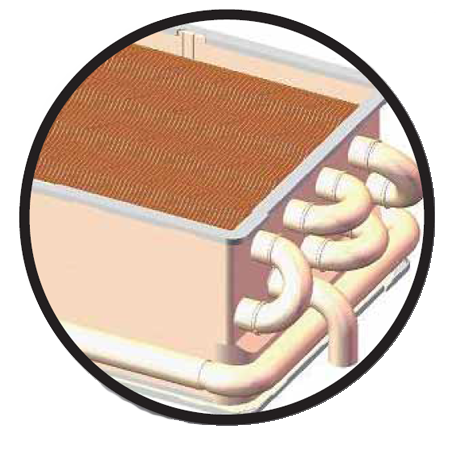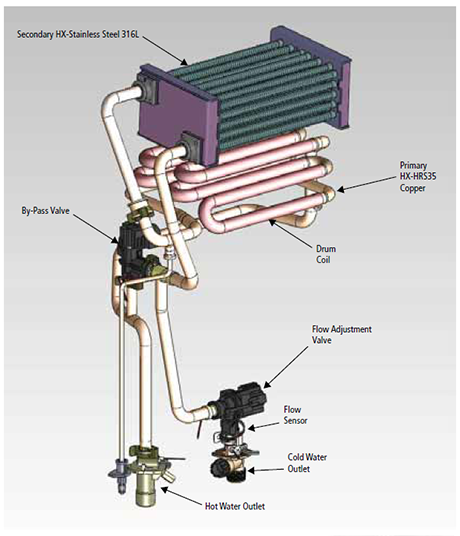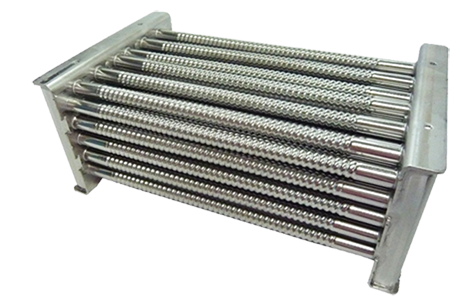Heat Exchanger HRS35

Only Takagi incorporates true commercial-grade heat exchangers in our tankless heater. (NOTE: T-H3J Series, T-H3S Series, T-D2/U Series, T-H3 Series, T-M32 and T-M50 Series non-ASME models) All aspects of the heat exchanger were designed to add the durability and reliability that is vital to any successful commercial organization or business.
HRS35 Copper Alloy
HRS35 is a heat-resistant copper alloy, with additive elements that make it much stronger and harder than the standard C1220 copper used in most other heat exchangers. HRS35 has 8 times the tensile strength of regular copper. Even at high temperatures, HRS35 maintains a fine grain and high strength. HRS35 provides resistance to the damaging effects of erosion that can cause heat exchangers to leak.

Drum Thickness
During every ignition cycle, thermal expansion causes all heat exchangers to undergo heat stress. After the thousands of ON/OFF cycles typically seen in a commercial application, this heat stress can prove damaging. This is why the heat exchangers in our commercial and light commercial products utilize drums that are 25% thicker, ensuring the longevity of our products. A thicker drum creates less strain on the heat exchanger.


Secondary Heat Exchanger 316L Stainless Steel
(Condensing Models Only)
The secondary condensing heat exchanger is made of high quality 316L stainless steel. This is where the rest of the heat transfer occurs. Due to the lower temperature, acidic condensation occurs, and stainless steel is required in order to avoid corrosion.
For condensing heat exchangers, it is more suitable to use 316L stainless steel because of the extreme environment (heat, acidic condensation, chloride) that the material is subjected to.
Primary Heat Exchanger:
Copper vs Stainless Steel
Heat transfers 25 times more readily through copper than stainless steel. Consequently, for the same amount of heat transfer, stainless steel heat exchangers need to be larger than copper heat exchangers, leading to a larger pressure loss.
At higher temperatures, it is the nature of stainless steel to become prone to a number of problems not usually experienced at room temperature. It is vulnerable to pitting corrosion and stress corrosion cracking (SCC).
Stainless steel is NOT better for durability because it is harder. Hardness causes the material to become brittle. Stainless steel will crack after numerous cycles of thermal expansion/contraction, especially with chloride in the water. Copper heat exchangers are less brittle and better suited for expansion/contraction without cracking. Copper is also better with heat transfer.
In a dual heat exchanger design,corrosion is not a big concern in the non-condensing primary heat exchanger because no condensation forms on the exterior of the pipes. Stainless steel is unnecessary for this stage.